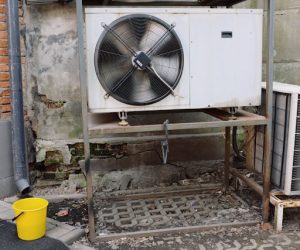In the cycle of homeownership, maintenance, and repair are inevitable components. From minor renovations to comprehensive overhauls, there’s always something to be done in and around your dwelling. But before you reach for the toolbox or call a professional, understanding the most essential repair approaches is crucial. Here are seven of the top home maintenance and repair strategies that every homeowner should know.

1. Maintaining Your Roof
Your home’s roof is its first line of defense against the elements. Therefore, it’s vital to perform regular checks and maintenance to ensure it remains in peak condition. Conduct a visual inspection of your roof at least once a year, keeping an eye out for loose, cracked, or missing shingles, as well as any signs of water damage such as sagging or discoloration in the ceiling. It’s also wise to clear out your gutters and downspouts to prevent water from pooling on your roof. If you notice extensive damage, it’s best to consult with a professional roofer to assess and address any issues, as these roof repair contractors in Rochester suggest. They have the expertise and tools to fix any roofing problems effectively.
Also, keep in mind that when dealing with minor roof repairs, safety should be your top priority. Always use a sturdy, properly secured ladder, and consider using a safety harness when working on sloped surfaces. Additionally, be mindful of weather conditions, as working on a wet roof can be extremely hazardous.
2. Revamping Your Plumbing
Plumbing problems can quickly escalate from minor inconveniences to major headaches. Regularly inspecting your home’s plumbing can help you identify and address issues before they become disasters. Check for leaks under sinks, around the water heater, and along visible pipes. You should also be wary of any unusual sounds, such as grinding or whistling, which can signal a problem with your system.
For DIY enthusiasts, basic plumbing repair can often be tackled with a few simple tools. A pipe wrench, plunger, and a roll of plumber’s tape are good starting points for most repairs. Remember to turn off the water supply before attempting any work, and be prepared to call a professional for more complex issues, such as a full pipe replacement or a malfunctioning water heater.
3. Electrical Essentials
A well-functioning electrical system is essential for the safety and comfort of your home. It’s crucial to pay attention to warning signs of electrical problems, such as flickering lights, hot outlets, or frequently tripped breakers. If you notice these issues, it may be time to examine your electrical system more closely.
To start, familiarize yourself with your electrical panel and the location of each circuit. If a breaker consistently trips, it could be a sign of an overloaded circuit or a short in the wiring. Unplug devices or turn off switches connected to that circuit, and if the problem persists, seek professional help. For loose or damaged outlets, you can often replace them yourself with the power turned off, but it’s important to understand the wiring and to follow safety protocols to avoid electrocution or fire hazards.
4. Refurbishing Your Walls and Ceilings
The state of your walls and ceilings can significantly impact the aesthetic appeal of your home. Damaged drywall, peeling paint, and unsightly water stains can make even the most well-designed spaces look neglected. Luckily, many of these issues can be addressed with straightforward repairs and a fresh coat of paint.
For small holes and cracks in the drywall, start by cleaning any loose debris from the area and then filling it with a spackling compound. Sand the spackle smooth once it’s dry and apply primer before painting to ensure a consistent finish. When dealing with larger holes or water damage, you may need to cut out the damaged portion of the wall and replace it with a new section of drywall. Always be sure to properly secure and seal the new material to the existing wall for a professional-looking repair.
5. Surface Repairs and Restoration
The surfaces in and around your home take a beating over time. From weather-worn decks to scuffed floors, maintaining the integrity and appearance of these surfaces is an important part of home repair. Identifying the right materials and techniques for the job is key to a successful surface restoration project.
Wood surfaces, like decks and fences, can be revitalized with periodic cleaning and the application of a protective sealant. Exterior surfaces may require power washing to remove dirt, grime, and flaking paint before refinishing. For interior floors, a fresh layer of wax or sealant can help protect them from daily wear and tear. The carpet should be routinely cleaned and, if it’s showing signs of significant wear, replaced before it becomes an eyesore.
6. Exterior Touch-Ups
Curb appeal is a major factor in a home’s overall aesthetic and value. Whether it’s a fresh coat of paint, regular lawn maintenance, or simple landscaping, keeping the exterior of your home looking its best is essential. Begin with an inspection of the outside of your house, looking for peeling paint, damaged siding, or areas where pests might be able to gain access.
Landscaping can also play a significant role in maintaining the exterior of your home. Shrubs and plants should be kept trimmed to prevent them from touching the house and dampening the exterior, which can lead to moisture issues. Mulch and gravel should be refreshed regularly to maintain a sleek appearance and prevent weed growth.
7. Insulating for Efficiency
Proper insulation is not only crucial for maintaining a comfortable temperature in your home but also for reducing energy costs and environmental impact. If your home is consistently drafty or your heating and cooling bills are higher than expected, inadequate insulation could be the culprit.
Begin by checking the insulation in your attic, as this is where heat loss is most common. If the insulation is compressed or wet, it may need to be replaced. Additionally, inspect the areas around doors and windows for gaps or damaged weather stripping. Applying caulk or foam insulation to these areas can help prevent air leakage and keep your home’s interior temperature consistent.

Remember, home repairs and maintenance are not just about the labor; they’re about the care and investment in the place you live. By staying proactive and informed, you can ensure that your home remains a safe, comfortable, and beautiful space for years to come. Whether you’re taking on a weekend DIY project or consulting with professionals, these seven strategies will guide you toward a successful repair and maintenance regimen for your home.



